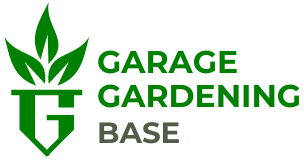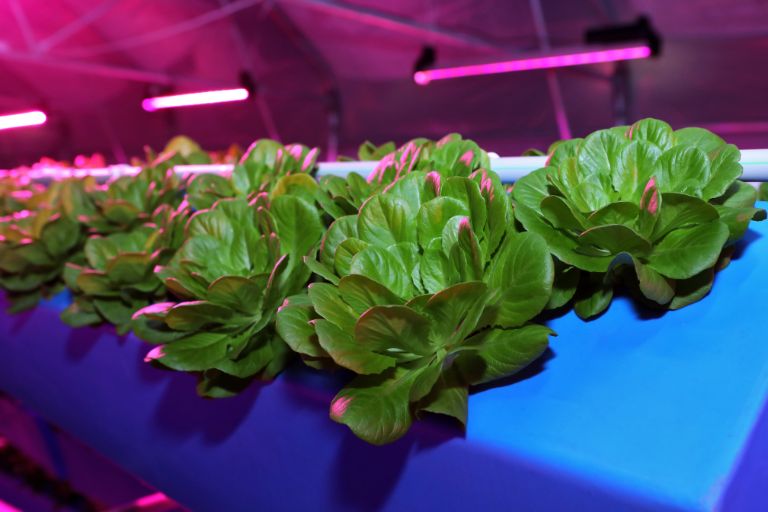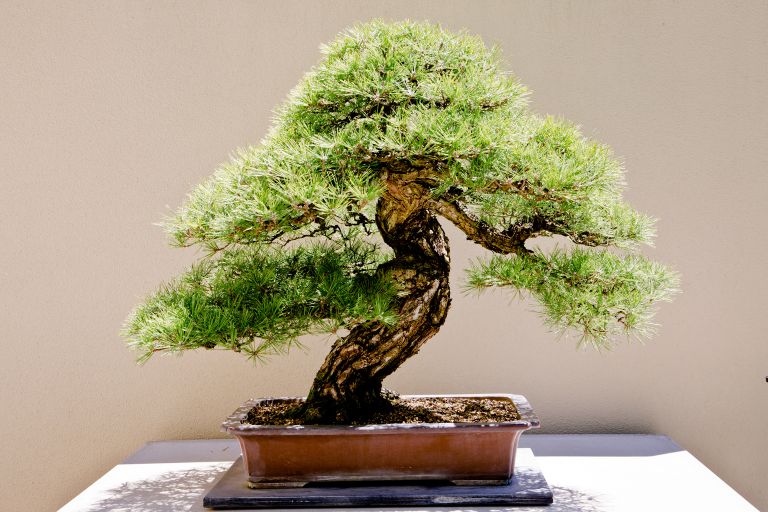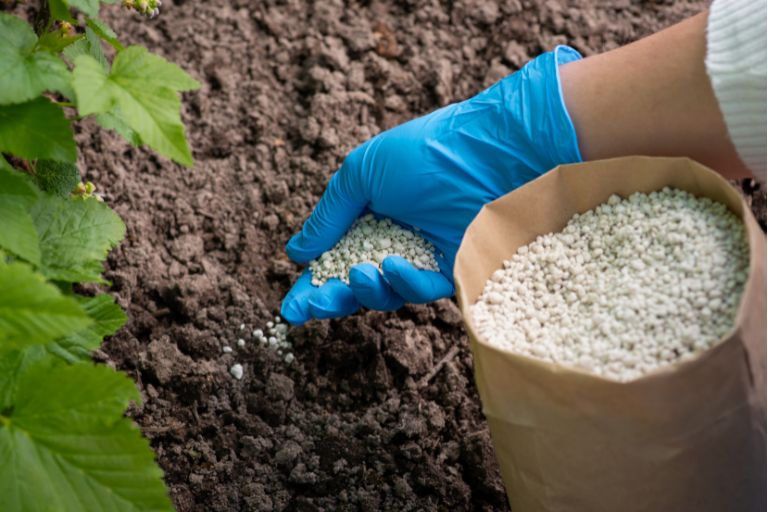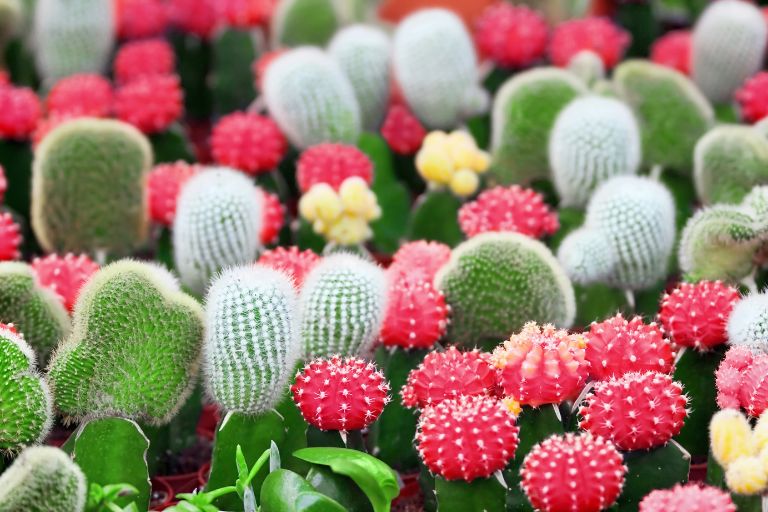Unlocking the Aromatic World: A Guide to Growing Tea Herbs in Your Garage
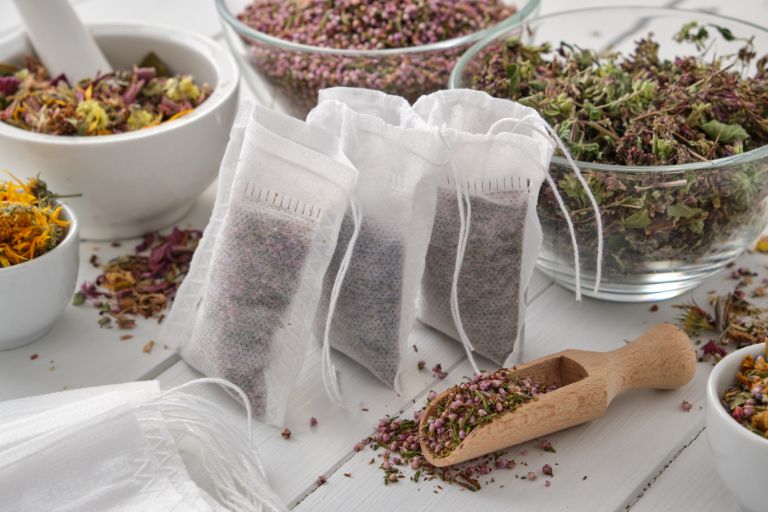
In today’s busy world, where outdoor space is often a luxury, the dream of cultivating a thriving garden full of aromatic herbs can feel out of reach. But within the confines of your garage lies a remarkable opportunity waiting to be unlocked: the art of growing tea herbs indoors. Far from being a compromise, this approach opens the door to a fragrant, flavoursome world where mint, chamomile, lavender and lemon balm can flourish under your care, regardless of the space limitations outside.
While the idea of a garage garden may seem unconventional, it embodies the spirit of adaptability and creativity that defines today’s urban gardener. Within these walls, you have the power to orchestrate a microclimate perfectly suited to the needs of your prized plants, creating an environment where they can thrive all year round. With a little ingenuity, dedication and the right guidance, you can transform your garage into a green sanctuary where every leaf holds the promise of wellness and delight.
Join us on a journey as we delve into the intricacies of growing tea herbs in your garage. From creating the perfect growing space to mastering the art of harvesting and beyond, this article will equip you with the knowledge and inspiration you need to embark on this fulfilling gardening adventure. Whether you’re a seasoned herbalist or a green thumb novice, prepare to discover the joys of bringing nature’s bounty into the heart of your home.
Understanding Tea Herbs
Enter the enchanting world of herbal infusions, where fragrant leaves, delicate flowers and soothing aromas combine to create a symphony of flavour and wellbeing. The stars of this botanical orchestra are four beloved tea herbs: mint, chamomile, lemon balm and lavender. Each has its own unique charm and therapeutic benefits, enticing tea lovers and herbalists alike to cultivate them with care and reverence.
Peppermint Tea
Description – With its vibrant green leaves and refreshing scent, mint is a perennial favourite in the world of herbal teas. Known for its invigorating flavour and cooling properties, mint leaves infuse teas with a crisp, mentholated taste that awakens the senses and soothes the throat. Whether enjoyed hot or cold, mint tea provides an invigorating experience, making it a popular choice for an uplifting morning brew or a post-meal digestive.
Flavour – Mint has a refreshing, cool flavour with a hint of sweetness and a subtle minty bite. It can range from mildly sweet to intensely pungent, depending on the variety.
Aroma – The aroma of mint is invigorating and uplifting, with bright, herbaceous notes that awaken the senses.
Health benefits – Mint is known for its digestive properties, helping to relieve indigestion, flatulence and nausea. It also acts as a natural breath freshener and can help relieve headaches and congestion. In addition, mint tea is hydrating and can promote general wellbeing.
Chamomile Tea
Description – Delicate and delicate, chamomile flowers exude a sweet, apple-like fragrance that beckons weary souls to unwind and relax. Known for its calming effects on the mind and body, chamomile tea is prized as a gentle remedy for stress, anxiety and insomnia. Sipping on a warm cup of chamomile tea lulls you into a state of tranquillity, where worries melt away and a sense of peace prevails, making it the perfect bedtime companion.
Flavour – Chamomile has a delicate, floral flavour with hints of apple and honey. It has a subtle sweetness that is calming and soothing.
Aroma – The aroma of chamomile is reminiscent of fresh flowers and apples, with a calming and inviting quality.
Health benefits – Chamomile is valued for its calming and sedative properties, making it a popular choice for promoting relaxation and improving sleep quality. It also has anti-inflammatory properties and can help relieve menstrual cramps, digestive problems and anxiety.
Lemon Balm Tea
Description – Bursting with citrus zest and bright green foliage, lemon balm brings a sunny disposition to any tea blend. Its subtle lemony flavour and uplifting aroma lift the spirits and promote mental clarity, making it a delightful choice for morning teas and afternoon pick-me-ups. In addition to its refreshing taste, lemon balm is valued for its calming properties, providing relief from tension and anxiety with every sip.
Flavour – Lemon balm has a bright, citrusy flavour with a hint of sweetness and mild herbal undertones. It offers a refreshing and uplifting taste reminiscent of lemon.
Aroma – The aroma of lemon balm is fresh, citrusy and invigorating, with hints of lemon peel and herbal notes.
Health benefits – Lemon balm is known for its calming and mood-enhancing properties, making it useful for reducing stress, anxiety and restlessness. It also has antioxidant properties and can support cognitive function, improve digestion and enhance general wellbeing.
Lavender
Description – A symbol of serenity and grace, lavender enchants tea drinkers with its intoxicating aroma and delicate purple flowers. Revered for its calming and soothing properties, lavender tea is a soothing elixir for frayed nerves and weary souls. Sipping a cup of lavender tea will transport you to fields of blooming lavender, where the gentle buzz of bees and a gentle breeze evoke a sense of peace and relaxation.
Flavour – Lavender has a floral and slightly sweet flavour with subtle herbal notes. It offers a delicate and aromatic taste that is both soothing and calming.
Scent – Lavender’s scent is captivating and fragrant, with floral, earthy and herbal notes that evoke a sense of calm and relaxation.
Health benefits – Lavender is valued for its calming and stress-relieving effects, promoting relaxation and aiding sleep. It also has anti-inflammatory and antimicrobial properties and can help relieve headaches, anxiety and skin irritations.
Setting Up Your Garage Garden
Assessing Space Requirements and Selecting Containers or Pots
– Evaluate the space available in your garage to determine how much area you can dedicate to your herb garden. Consider factors such as floor space, shelving or hanging options.
– Choose containers or pots that are appropriately sized for the growth requirements of each herb. Make sure containers have drainage holes to prevent waterlogging and root rot.
– Choose containers made of breathable materials, such as terracotta or ceramic, which allow proper airflow to the roots and help regulate moisture levels.
Creating an Ideal Microclimate with Proper Lighting, Temperature, and Humidity Control
Lighting – Assess the natural light conditions in your garage and supplement with artificial grow lights as required. Position the lights to provide adequate coverage and adjust the duration of light exposure based on the specific light requirements of each herb.
Temperature – Aim for a consistent temperature range suitable for the growth of tea herbs, typically between 60°F to 80°F (15°C to 27°C). Avoid placing plants near drafts or heating vents that can cause temperature fluctuations.
Control humidity – Monitor humidity levels in your garage and aim for a moderate range of 40% to 60%. Use a humidifier or mist system to increase humidity if necessary, especially during the dry season or in arid climates. Conversely, ensure proper ventilation to prevent excessive humidity and the development of fungal disease.
Exploring Vertical Gardening Options for Maximising Space Efficiency
– Make the most of vertical space by installing shelving, wall planters or hanging baskets to grow tea herbs vertically. This approach maximises space efficiency and allows you to grow a greater variety of herbs in a limited area.
– Choose compact and trailing varieties of tea herbs that are well suited to vertical gardening, such as dwarf mint, trailing rosemary or cascading thyme.
– Ensure that hanging planters or shelves are properly supported to carry the weight of the soil, containers and growing herbs. Use strong hooks, brackets or wall anchors to secure the structures in place.
Soil and Watering
Choosing the Right Potting Mix and Ensuring Proper Drainage
– Choose a well-draining potting mix specifically designed for container gardening or herbs. Avoid using heavy garden soil as this can lead to waterlogging and inhibit root development.
– Look for potting mixes that contain a balanced mix of organic matter, such as compost, peat moss or coco coir, along with perlite or vermiculite to improve aeration and drainage.
– Consider adding a handful of coarse sand or small gravel to the potting mix to further improve drainage. This will help prevent water from pooling at the bottom of the containers, reducing the risk of root rot and fungal diseases.
– Before planting, ensure that the containers have sufficient drainage holes in the bottom to allow excess water to drain freely. If necessary, drill additional holes or use a layer of gravel or broken pottery shards to improve drainage.
Establish a Watering Routine to Prevent Over or Under Watering
– Develop a watering routine based on the specific needs of each tea herb and the environmental conditions in your greenhouse. Factors such as temperature, humidity and light intensity can affect the frequency of watering.
– Before watering, check the moisture level of the potting mix by inserting your finger into the soil. If it feels dry to the touch at a depth of about an inch, it’s time to water.
– Water the herbs thoroughly until the excess water begins to drain from the bottom of the containers. Allow the soil to drain completely to prevent waterlogging.
– Avoid overwatering as this can lead to root rot and other moisture related problems. Allow the top inch of potting mix to dry out between waterings.
– During hot or dry spells, increase the frequency of watering to keep the mix moist but not soggy. Conversely, reduce watering in cooler or wetter conditions to prevent waterlogging.
– Consider using a watering can with a narrow spout or a drip system to deliver water directly to the base of the plants to minimise water waste and reduce the risk of water splashing onto foliage.
Lighting Requirements
Assess the Availability of Natural Light in your Garage
– Assess the orientation of your garage and the placement of windows or skylights to determine the amount of natural light available throughout the day.
– Observe the intensity and duration of sunlight in different areas of the garage, noting any potential obstructions such as trees, buildings or awnings that may cast shadows.
– Consider seasonal variations in sun angle and intensity, as well as changes in daylight hours, to anticipate how natural light availability may vary throughout the year.
– Identify areas that receive the most natural light and prioritise placing your herb trays or shelves in these locations to maximise sunlight absorption.
Supplement with Artificial Grow Lights to Ensure Optimum Growth
– Choose appropriate artificial grow lights to supplement natural light and provide additional illumination for your tea herbs, especially in areas with limited sunlight or during the darker months.
– Choose full-spectrum LED grow lights or fluorescent grow tubes designed specifically for indoor gardening as they emit a balanced spectrum of light that closely mimics natural sunlight and promotes healthy plant growth.
– Position the grow lights above the tea herb containers or shelves at the optimum distance to provide adequate coverage and intensity without causing light burns or heat stress to the plants.
– Use timers or smart lighting systems to regulate the duration and timing of artificial light exposure to ensure that your tea herbs receive consistent photoperiods that are conducive to their growth and development.
– Regularly monitor the performance of artificial grow lights and adjust their placement, intensity or duration as needed based on the growth patterns and health of your tea herbs.
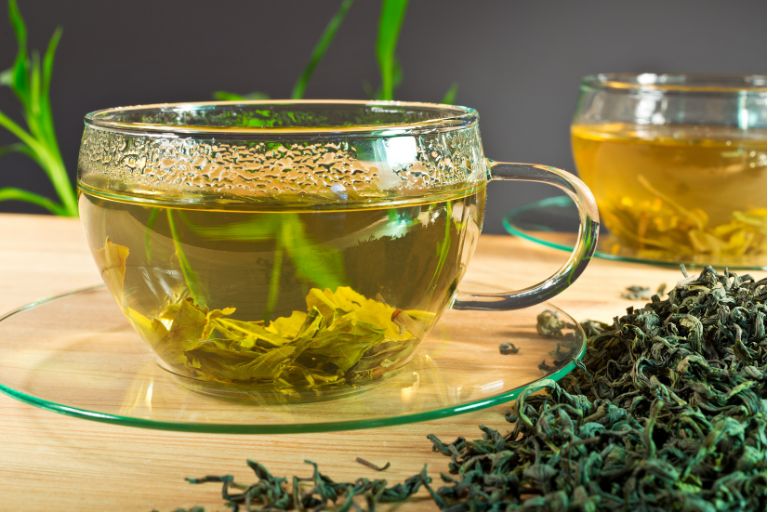
Maintenance and Care
Pruning and Harvesting Techniques to Encourage Continued Growth and Abundance
– Prune tea herbs regularly to encourage bushy growth, increase airflow and prevent overcrowding. Use clean, sharp scissors or pruning shears to cut back excess foliage, concentrating on removing dead or damaged leaves and any stems that are becoming leggy or too long.
– Harvest tea herbs frequently to encourage new growth and ensure a continuous supply of fresh leaves. Use a gentle harvesting technique, picking leaves or flowers individually or in small clusters, and avoid removing entire stems or plants at once.
– Encourage branching and lateral growth by pinching off the tips of stems or stems at leaf nodes. This will stimulate new growth and result in a fuller, more compact plant.
Monitor for Pests and Diseases and use Organic Pest Control Methods
– Inspect tea herbs regularly for signs of pests such as aphids, spider mites, whiteflies or caterpillars, as well as symptoms of common diseases such as powdery mildew, fungal leaf spot or root rot.
– Use cultural control methods to minimise pest and disease problems, such as maintaining proper plant spacing, providing adequate ventilation and avoiding over-watering.
– Use organic pest control methods such as hand-picking pests, spraying plants with insecticidal soap or neem oil, or introducing beneficial insects such as ladybugs or lacewings to naturally control pest populations.
– Use preventative measures such as organic fungicides or copper-based sprays to protect plants from fungal diseases, especially during periods of high humidity or moisture.
Fertiliser Strategies to Provide Essential Nutrients Without Overfeeding
– Choose a balanced organic fertilizer formulated specifically for herbs or vegetables with an N-P-K (nitrogen, phosphorus, potassium) ratio that promotes healthy growth and flowering.
– Apply fertiliser sparingly, following the recommended dosage on the product label, and avoid over-fertilising, which can lead to nutrient imbalances, salt build-up in the soil and excessive vegetative growth.
– Incorporate slow-release or organic fertilisers into the potting mix at planting or apply liquid fertilisers diluted to half strength every 4-6 weeks during the growing season.
– Monitor the plant’s response to fertilization and adjust the frequency or dosage as needed based on the growth rate, leaf colour and overall health of the tea herbs.
– Consider supplementing with organic amendments such as compost, worm castings or seaweed extract to provide additional micronutrients and beneficial soil microbes to promote long-term soil health and plant vitality.
Harvesting and Processing
Timing the harvest to maximise flavour and potency is essential to ensure you capture the full essence and benefits of your tea herbs. The following are some guidelines for plucking.
Observe growth stage – Monitor the growth stages of your tea herbs, noting when they begin to produce mature leaves or flowers. Different herbs may have different harvesting times depending on their growth habits and intended use.
Pick in the morning – Aim to harvest your tea herbs in the morning when their essential oils and flavours are most concentrated. This is usually before the heat of the day causes the oils to evaporate and the leaves to wilt.
Check maturity – For leaves, wait until they are fully developed but still tender and vibrant in colour. Avoid harvesting leaves that are yellowed, wilted or show signs of disease or pest damage. For flowers, harvest them when they are just beginning to bloom for the best flavour and potency.
Consider seasonality – Some herbs may produce more flavourful and aromatic leaves or flowers during certain seasons. For example, chamomile may have a stronger flavour if harvested in spring or early summer when the flowers are at their peak.
Harvest regularly – Encourage continued growth and harvest by regularly pruning your tea herbs. Frequent harvesting of small quantities of leaves or flowers can encourage new growth and extend the harvesting season.
Trial and error – Experiment with different harvest times and methods to determine what works best for each herb and your personal preferences. Taste samples at different stages of maturity to find the optimum balance of flavour and potency.
Dry immediately – After harvesting, it’s important to dry the leaves or flowers immediately to preserve their flavour, aroma and potency. Spread them out in a single layer on a clean, dry surface away from direct sunlight and moisture. Once dried, store in airtight containers in a cool, dark place until ready to use.
Proper drying and preservation of your harvested tea herbs is essential to prolong their shelf life and retain their flavour, aroma and potency. The following are some effective methods.
Air Drying
– Bundle small bunches of herbs together and secure with twine or rubber bands.
– Hang the bundles upside down in a warm, dry, well-ventilated place out of direct sunlight. A dark room or garage with good ventilation will work well.
– Allow the herbs to air dry for 1-2 weeks or until they are completely dry and brittle to the touch.
– When dry, remove the leaves or flowers from the stems and store in airtight containers or resealable bags in a cool, dark place.
Oven Drying
– Preheat your oven to the lowest temperature setting (usually around 100-120°F or 40-50°C).
– Spread the harvested herbs in a single layer on a baking sheet lined with greaseproof paper.
– Place the tray in the oven and leave the door slightly ajar to allow moisture to escape.
– Check the herbs frequently and turn the tray if necessary to ensure even drying.
– Remove the herbs from the oven when they are dry and crisp, usually within 1-2 hours.
– Allow the herbs to cool completely before storing in airtight containers.
Dehydrator
– Follow the manufacturer’s instructions to preheat your dehydrator to the appropriate temperature setting for herbs (usually around 95-110°F or 35-45°C).
– Spread the herbs in a single layer on the dehydrator trays, making sure there is enough space between them for air circulation.
– Allow the herbs to dehydrate for several hours, checking regularly, until they are completely dry and brittle.
– When dry, transfer the herbs to airtight containers or resealable bags for storage.
Freeze Drying
– Place the herbs in a single layer on a baking sheet and place in the freezer for a few hours until frozen solid.
– Transfer the frozen herbs to airtight containers or resealable bags, removing as much air as possible.
– Place the containers in the freezer for long-term storage. Frozen herbs can retain their flavour and aroma for several months.
Infused Oils or Vinegars
– Alternatively, you can preserve your herbs by infusing them in oils or vinegars.
– Place the dried herbs in a clean, dry jar and cover with a good quality oil or vinegar of your choice.
– Close the jar tightly and store in a cool, dark place for 1-2 weeks, shaking occasionally to infuse the flavours.
– Once infused, strain the herbs and transfer the flavoured oil or vinegar to a clean, sterilised bottle for use in cooking or as a salad dressing.
Whichever method you choose, remember to label your dried herbs with the name and date of harvest for easy identification. Properly dried and preserved tea herbs can retain their flavour and potency for up to a year, allowing you to enjoy their benefits long after the growing season has ended.
Exploring Creative Uses
Beyond brewing tea, tea herbs offer a myriad of creative and practical uses in culinary endeavours, skin care routines and aromatic applications.
Culinary Uses
– Incorporate fresh or dried herbs into a variety of culinary dishes to add depth of flavour, aroma and nutritional benefits.
– Mint can be used to infuse drinks such as lemonade or mojitos, as well as to flavour salads, sauces and desserts.
– Chamomile flowers can be steeped in hot water to make tea or infused into syrups, dressings and baked goods for a delicate floral flavour.
– Lemon balm leaves can be chopped and added to salads, fruit salads or yoghurt for a refreshing citrus flavour.
– Lavender buds can be used to flavour baked goods, ice cream and chocolate, or infused into honey for a fragrant sweetener.
Homemade Skin Care Products
– Use the soothing and healing properties of tea herbs to create homemade skin care products such as facial toners, creams, balms and bath soaks.
– Chamomile tea can be used as a gentle facial toner or added to homemade facial masks to soothe and calm irritated skin.
– Mint leaves can be infused into witch hazel or apple cider vinegar to make a refreshing toner for oily or acne-prone skin.
– Lemon balm can be steeped in hot water and used as a facial steam to open pores and refresh tired skin.
– Lavender essential oil or infused oil can be added to bath salts or body oils for a relaxing and aromatic bath.
Aromatic Sachets and Potpourri
– Create scented sachets or potpourri blends with dried tea herbs to freshen up closets, drawers or living spaces.
– Combine dried mint leaves with lavender buds and rose petals for a fragrant sachet to place in linen closets or dresser drawers.
– Mix dried chamomile flowers with dried citrus peel and cinnamon sticks for a warm and inviting potpourri blend to display in decorative bowls around the home.
– Fill small muslin or organza bags with dried lemon balm leaves and tie with ribbon to hang in the bathroom or place in gym bags for a natural deodoriser.
Troubleshooting Common Issues
Common challenges in growing tea herbs, such as leggy growth, yellowing leaves and fungal infections, require a combination of preventive measures and targeted interventions. The following are strategies for tackling each challenge.
Leggy Growth
Provide adequate light – Ensure your tea herbs receive enough natural light or supplement with artificial grow lights to prevent leggy growth. Position lights closer to the plants to encourage compact, bushy growth.
Prune regularly – Trim back leggy stems to encourage branching and promote denser foliage. Pinch off the tips of stems or stems at leaf nodes to encourage lateral growth.
Maintain proper spacing – Avoid overcrowding plants as competition for light can lead to leggy growth. Space plants appropriately to allow for adequate air flow and light penetration.
Yellowing Leaves
Check soil moisture – Yellowing leaves can be a sign of over or under watering. Make sure the soil is consistently moist but not soggy and adjust your watering routine accordingly.
Monitor nutrient levels – Yellowing leaves can indicate a lack of nutrients, particularly nitrogen or iron. Consider fertilising with a balanced organic fertiliser or adding nutrient-rich amendments such as compost or compost tea.
Assess drainage – Poor drainage can lead to waterlogged soil, which can cause root rot and yellowing leaves. Ensure that containers have sufficient drainage holes and use a well-draining potting mix to prevent waterlogging.
Fungal Infections
Practice good hygiene – Keep your garden tools, containers and work surfaces clean to prevent the spread of fungal spores. Dispose of infected plant material promptly to minimise the risk of disease transmission.
Improve air circulation – Increase ventilation around your tea herbs by spacing plants apart, pruning to remove overcrowded or diseased foliage, and using fans to promote airflow. Adequate airflow helps reduce humidity levels and inhibits fungal growth.
Use preventative treatments – Use organic fungicides or botanical extracts such as neem oil, garlic oil or copper-based fungicides to protect against fungal infections. Apply treatments preventively or at the first sign of disease symptoms, following label instructions carefully.
Avoid overhead watering – Water plants at the base rather than overhead to minimise moisture on the foliage, which can create an environment conducive to fungal disease. Use drip irrigation or a watering can with a narrow spout for targeted watering.
Growing tea herbs in your garage is a rewarding journey of aromatic delight, culinary adventure and holistic wellness. By paying careful attention to space, lighting, watering and maintenance, you can create an ideal microclimate that encourages the growth of vibrant and healthy plants. From the refreshing zing of mint to the soothing embrace of chamomile, each herb brings its own unique flavour, aroma and therapeutic benefits to your garden and beyond.
As you explore the culinary uses, skincare applications and aromatic potential of tea herbs, you’ll discover endless opportunities for creativity and self-care. Whether brewing a cup of herbal tea, creating homemade skincare products or making aromatic sachets, these botanical treasures offer a wealth of sensory experiences and holistic benefits.
While challenges such as leggy growth, yellowing leaves and fungal infections can arise, they also present opportunities for learning and growth. When you tend your tea herbs in the cosy confines of your garage, you’re not just tending plants; you’re nourishing your body, soothing your soul and savouring the simple joys of life.
